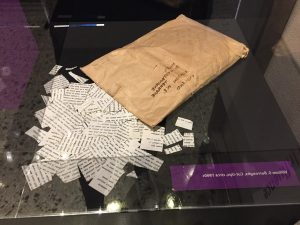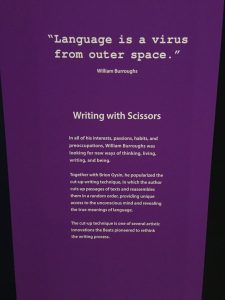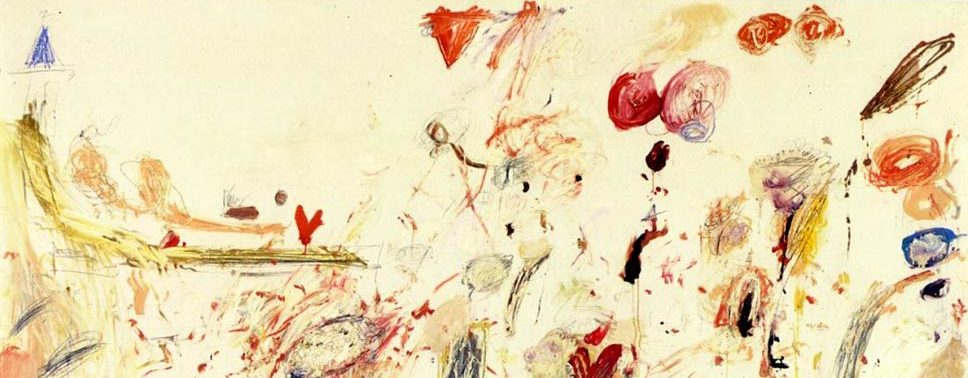The case that I chose is called “Writing with Scissors”, and the object on display is William Burroughs’s cut ups in a folder from circa 1960s. There are lots of different sizes of squares and rectangles of paper with words from many passages of texts. This case first drew me to it because it just looked strange and interesting because I wondered why someone would cut up passages and what they were planning to do with the squares.

Although this case talks about a technique called the cut-up writing technique, it reminded me of the works by Ted Berrigan and Medbh McGuckian. During one of our MARBL visits, we saw Ted Berrigan’s process of scratching out words from a book to create an entirely new work. During class, we also saw how Medbh McGuckian would choose bits and pieces from other poems/works to forge her own poem. Both of Berrigan’s and McGuckian’s work “borrow” words/phrases from other work, just like what Burroughs was doing with the cut-ups. These are all examples of intertextuality, which I think is a very creative and innovative way to create your own piece of work. This installation gives me ideas on how I might structure my own virtual exhibit because the Beats Exhibit allowed me to see how bits and pieces of artwork are insights to the artists’, poets’ or writers’ character and thoughts, and that they create these kinds of work for a reason. The exhibit gave me an idea on what types of materials I should be looking at for my poet to really get to know her and put together a meaningful virtual exhibit.

Some questions that came up after looking at this installation at the Beats Exhibit were: how did Burroughs choose which passages to cut from? How did he put the cut ups together? Did all the phrases on the square have to match with the other phrases from another square or did he only do one line at a time? I would love to read a collection of Burroughs’s work along with where and how he got his sources. I want to discover how he approached this intertextuality technique and what kind of new texts he liked to create. Through these examples of his work, I can look into this train of thought as he puts together the cut-up passages. I would most likely have to look at scholarly books if I want to also read about the sources of the texts. I am also aware that there were past exhibits in museums, such as the Irish Museum of Modern Art, that showcased Burroughs’s work. I would love to attend one of these exhibits to learn more about Burroughs’s creativity and ideas because it really is a unique approach to writing.

